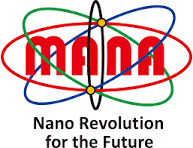Research
We are engaged in the development of quantum materials that exhibit novel electronic and magnetic phases and properties, and in uncovering their innovative functions. Our particular interest lies in the entropic and thermal functionalities of quantum materials. In addition, we keep exploring materials with exotic electronic properties, such as unconventional superconductivity and quantum spin liquids. Examples of our ongoing projects, along with some highlights so far, are presented below.
Ongoing Projects
Entropic Functions of Quantum Materials
Quantum materials often host large electronic entropy arising from their charge, spin, orbital, and lattice degrees of freedom. This entropy can be exploited for applications such as heat storage and solid-state cooling. We explore new quantum materials with exceptionally large electronic entropy and investigate ways to control it for functional use.
Thermal Control Using Quantum Materials
Control of heat flow, i.e., thermal management, has become an increasingly important issue in light of the growing thermal burden from rising power consumption. To address this, the development of “thermal devices” such as thermal switches and thermal rectifiers is highly desired. We investigate the potential functionalities of quantum magnets as thermal management materials, as their thermal properties may be tuned by magnetic fields.
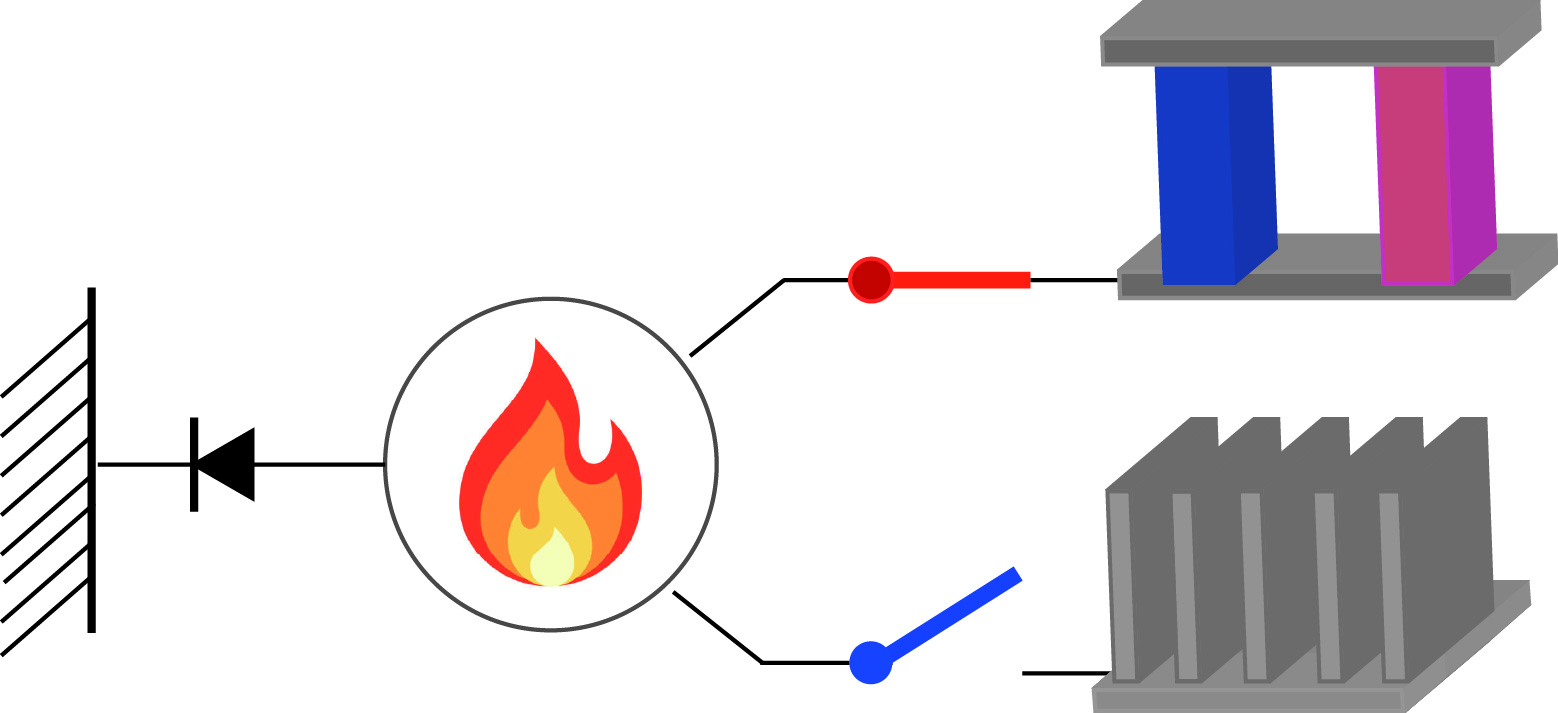
Development of New van der Waals Magnets
van der Waals magnets are layered magnetic materials in which the magnetic layers are bound by weak van der Waals forces. They have attracted considerable attention not only for their unique low-dimensional magnetism but also for their promising potential in device applications. Our research focuses on synthesizing novel van der Waals magnets with tailored magnetic and electronic functionalities, including enhanced magnetic ordering temperatures, unconventional magneto-thermal properties, and exotic magnetic excitations driven by strong spin–orbit coupling.
Exploration of Exotic Spin-Orbit-Entangled Electronic Phases
The interplay between moderate electron correlations and strong spin–orbit coupling in heavy transition-metal compounds has been shown to produce a variety of exotic phases, including spin–orbit Mott insulators, mutipolar ordering, and spin–orbit–induced semimetals. Our research aims to uncover further unconventional electronic states that remain hidden, such as topological spin liquid, superconductivity emerging near spin-liquid phases, and multipolar liquid states.
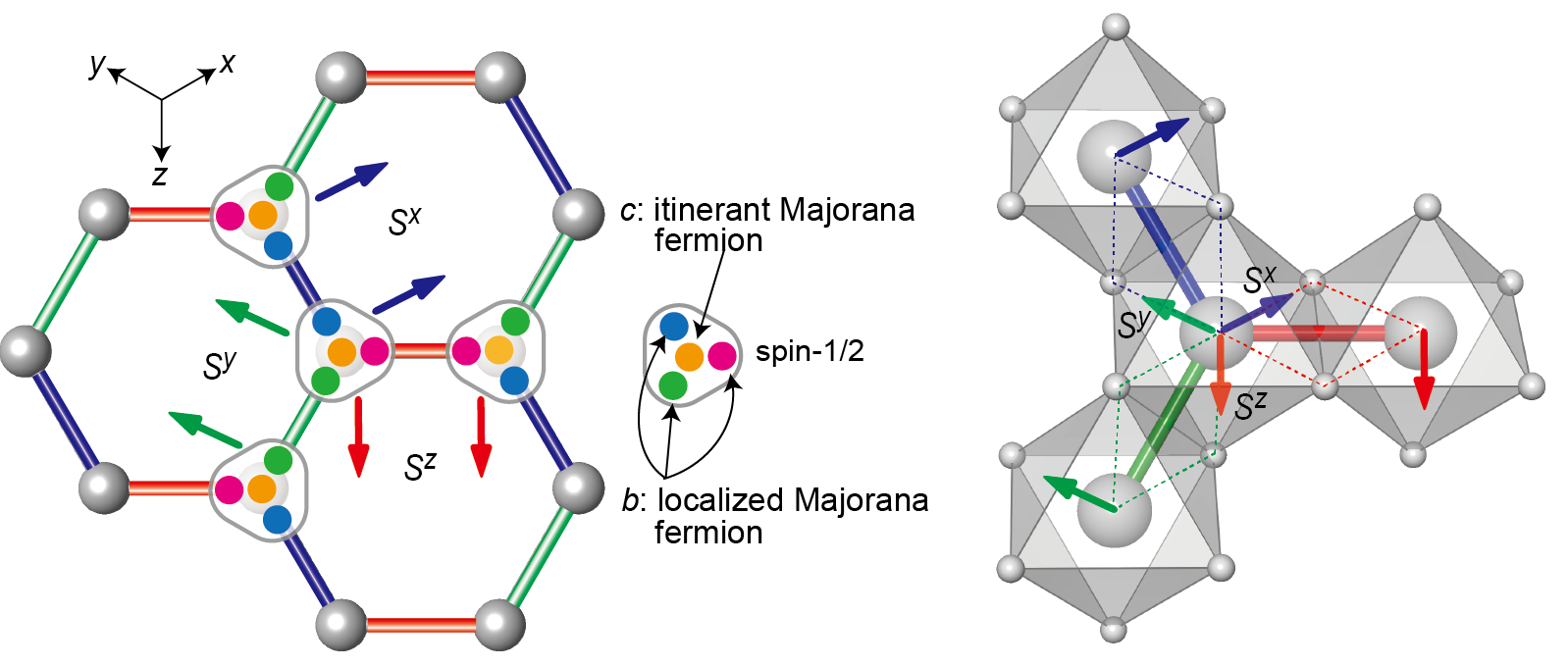
High-Entropy Quantum Materials
High-entropy oxides comprise multiple cations—typically more than five—sharing the same crystallographic site. The resulting large configurational entropy facilitates a fully random cation distribution, and this extreme chemical disorder has been shown to yield remarkable properties such as giant dielectric constants and exceptional ionic conductivity. By extending the high-entropy concept to quantum materials, we seek to develop advanced electronic and magnetic functionalities.
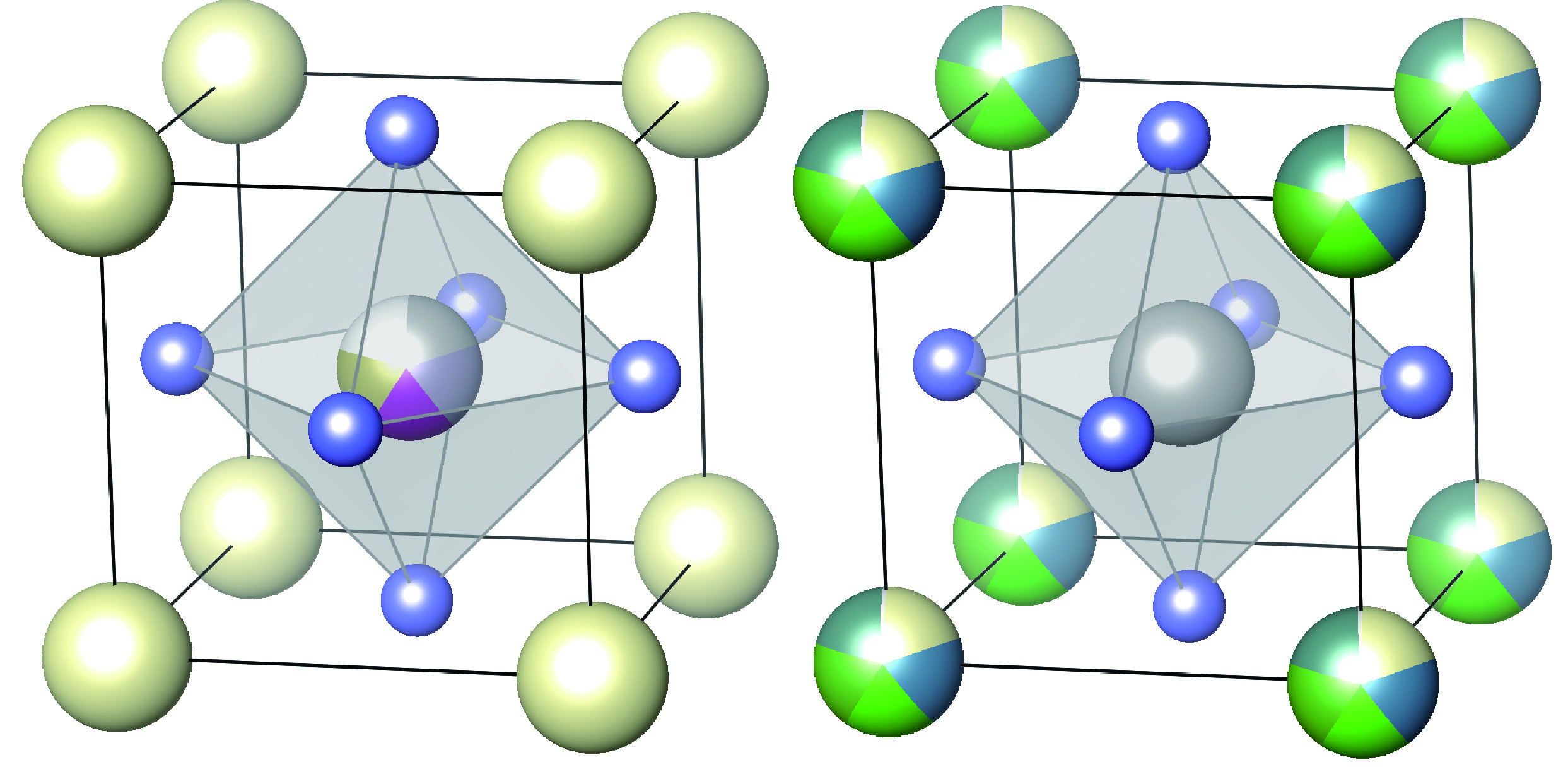
Highlights of our research so far
Candidate Materials for Kitaev spin liquid
The realization of a quantum spin liquid has been one of the long-standing challenges in condensed matter physics. Among proposed models, the Kitaev honeycomb model, defined by bond-dependent Ising interactions (the so-called Kitaev couplings) on a honeycomb lattice, stands out as its ground state is rigorously established to be a quantum spin liquid hosting novel Majorana excitations. In 2009, Jackeli and Khaliullin demonstrated through a microscopic theory that Kitaev-type interactions naturally arise in strongly spin–orbit–coupled transition-metal compounds such as iridates (Phys. Rev. Lett. 102, 017205 (2009)). This discovery sparked a worldwide effort to realize a Kitaev spin liquid in real materials. In this context, we have developed two key “Kitaev materials”: the hyperhoneycomb iridate β-Li2IrO3 [1,2] and the protonated iridate H3LiIr2O6 [3,4]. The former features a three-dimensional analogue of the honeycomb lattice, known as the hyperhoneycomb lattice of Ir, while the latter has been identified as a quantum spin liquid candidate potentially linked to Kitaev interactions.

[1] T. Takayama et al., Phys. Rev. Lett. 114, 077202 (2015).
[2] T. Takayama et al., Phys. Rev. B 99, 125127 (2019).
[3] K. Kitagawa, T. Takayama et al., Nature 554, 341 (2018).
[4] T. Takayama et al., npj Quantum Mater. 10, 7 (2025).
Spin-orbit physics in 4d/5d transition-metal compounds
Traditionally, 3d transition-metal compounds with strong electron correlations have played a central role in realizing novel electronic states in correlated quantum materials, exemplified by high-Tc superconductivity, colossal magnetoresistance, and multiferroics. In contrast, 4d and 5d transition-metal compounds have been long regarded as weakly correlated and thus less exotic, and consequently received less attention. However, another key electronic parameter—spin–orbit coupling—becomes increasingly significant when moving from 3d to 4d and 5d systems. The interplay between moderate electron correlation and strong spin–orbit coupling has recently been revealed to give rise to a spin-orbit-entangled state and resultant unique electronic phases and phenomena [5], including spin–orbital liquids, Bose–Einstein condensation of magnetic excitons, and correlated topological semimetals.
Our research focuses on exploring such phases in 4d and 5d transition-metal compounds. Examples of our discoveries include multipolar order in 5d systems [6], competition between spin–orbital entanglement and orbital molecule formation [7,8], and the emergence of spin–orbit–driven semimetallic states [9-11].

[5] T. Takayama et al., J. Phys. Soc. Jpn. 90, 062001 (2021).
[6] H. Ishikawa et al., Phys. Rev. B 100, 045142 (2019).
[7] T. Takayama et al., Phys. Rev. Res. 4, 043079 (2022).
[8] A. Krajewska et al., Sci. Adv. 10, eadn3880 (2024).
[9] T. Takayama et al., Sci. Rep. 4, 6818 (2014).
[10] T.Takayama et al., J. Phys.: Condens. Matter 31, 074001 (2019).
[11] T. Takayama et al., Phys. Rev. Mater. 4, 075002 (2020).
Discovery of new 4d/5d-based superconductors
Strong spin–orbit coupling in 4d and 5d transition-metal compounds also offers a platform for realizing exotic superconductivity. Our research has explored unconventional superconductors, including extremely strong-coupling superconductivity in Pt-based antiperovskites [12], superconductivity emerging at the critical point of electronic order in ruthenium pnictides [13], and unusually large upper critical fields in the quasi-one-dimensional compound Ta2PdS5 [14].
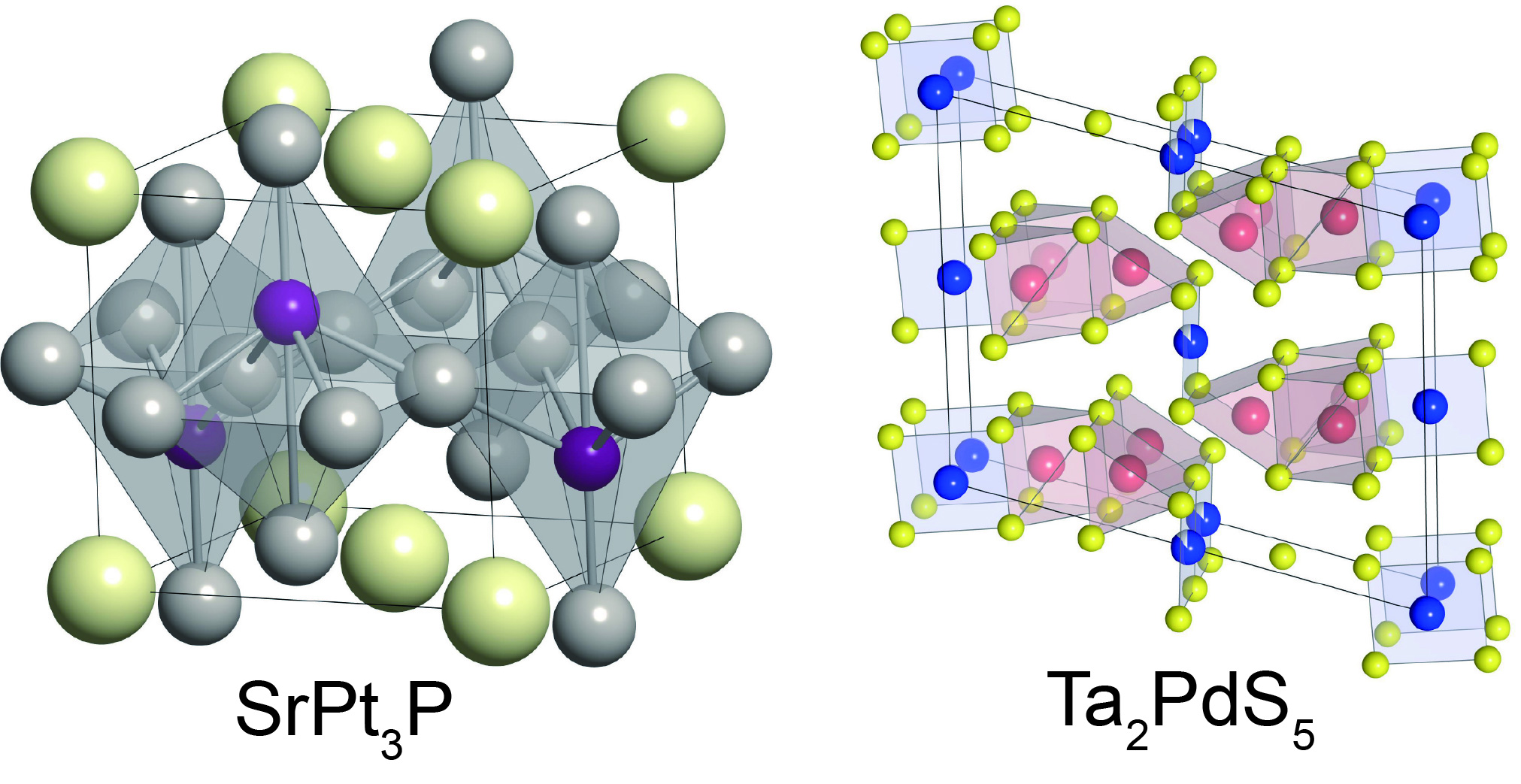
[12] T. Takayama et al., Phys. Rev. Lett. 108, 237001 (2012).
[13] D. Hirai et al., Phys. Rev. B 85, 140509(R) (2012).
[14] Y. Lu et al., J. Phys. Soc. Jpn. 83, 023702 (2013).

